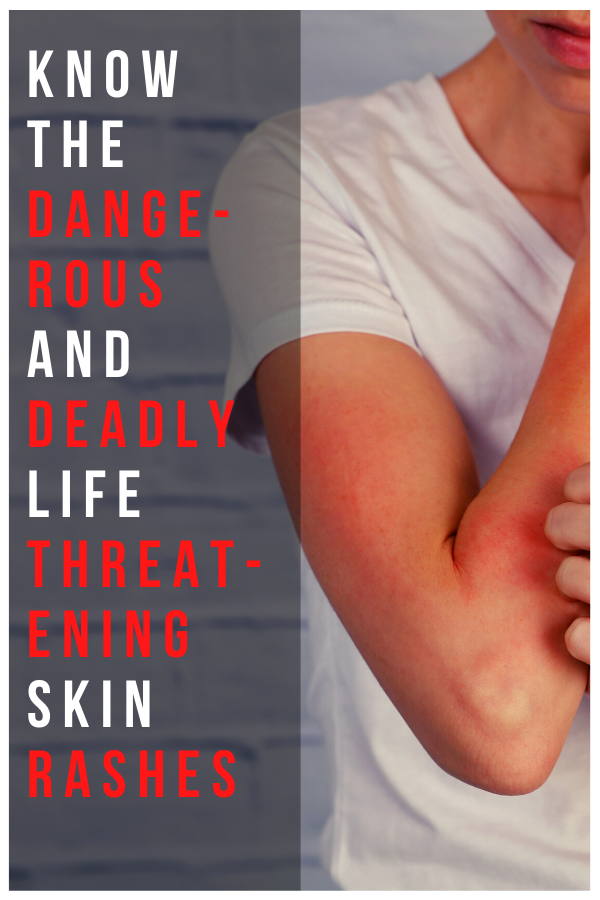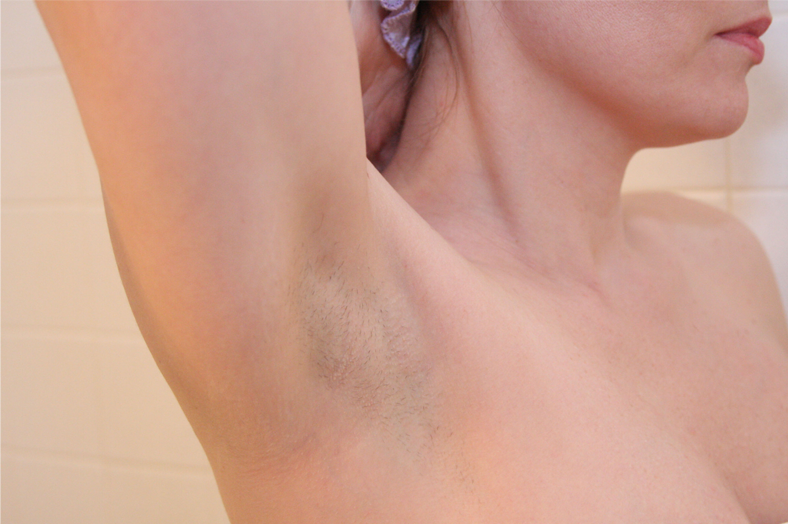Gross, Scratchy and Embarrassing – The three right words to describe rashes occurring on your skin, but sometimes there is a fourth word to it, which is Deadly.
Most rashes that develops on the skin of both children and adults are not life-threatening, simply nuisances and distressing. Life-threatening skin rashes are rare, however, when they occur, you must identify them and consult the physician immediately.
The five-potentially life-threatening skin disorders that have rashes as the major symptom are Stevens-Johnson syndrome (SJS), staphylococcal scaled skin syndrome (SSSS), pemphigus vulgaris (PV), toxic epidermal necrolysis (TEN) and toxic shock syndrome (TSS). Symptoms of life-threatening rashes affect full body, or most of it. Accordingly, all the said disorders have one or more following symptoms:
The rash adversely affects both skin and the mucous membranes (moist linings of eyes, mouth, nose, urethra and vagina).
They have blisters on the top. Blisters over the deadly rash usually have the following traits:
Blisters include the slender outer skin layer that covers large parts of body. They are filled with fluid at first, and before breaking up they may turn loose. When they rupture, the skin below is moist and painful.
Blisters can develop over any or all the mucous membranes listed. Blisters in the areas may not be noticeable, as they may rupture fast, specifically in the mouth.
|
What makes you think that a rash on the skin may be life-threatening?
|
Causes of Life-threatening Skin Rashes
Serious and dangerous rashes are generally caused by allergic reactions, poisonous byproducts of an infection and disorders of immune system. Blisters in such skin disorders usually stem out when the proteins that connect skin layers are attacked. Since, the proteins holding them intact becomes dead, the skin layers split apart and fluid fills the space between them, thus forming blisters.
Pemphigus vulgaris (PV)
- Pemphigus vulgaris is a disorder of the immune system (an autoimmune disorder). Akin to all autoimmune disorders, the body’s natural immune system erroneously identifies proteins in the body as foreign particles and initiates the natural response to eliminate the foreign proteins secreting antibodies to attack foreign intruder.
- In PV, the mission of the antibodies is to attack and eliminate proteins within the skin.
- Additionally, certain medications have been associated with the development of Pemphigus vulgaris, including interleukin 2, D-penicillamine, enalapril penicillin, captopril, rifampicin and nifedipine.
Symptoms
- PV, the rash occurs commonly in adults, who are 40-60 years of age; however, it has been found in children as young as 3-years and in adults as old as 89 years.
- The painful blisters in PV are irregularly shaped, raised skin lesions, typically more than half inch
- It can occur in both women and men
- Lesions usually start in the mouth and lips
- Since blisters can cover large area of the skin, infection can be grave and can easily spread into the blood
- If not treated, the severe infection may turn fatal
Toxic Shock Syndrome (TSS)
- TSS is caused by an underlying infection caused by a bacteria “Staphylococcus.” Certain strain of bacteria emit poisons that are released into the bloodstream and cause the infection throughout the body
- In 1970s, the infection became a public health issue with the introduction of super-absorbent tampons
- Other factors that may lead to TSS include surgical wound infections, infected nasal packing after nasal surgery, superficial skin infections and infections after delivering a baby
Symptoms:
- The life-threatening skin rash usually affects teens and young adults
- 4 out of 5 are women
- 2/3rds of people suffering from TSS are below 25 years of age
- It may involve mucous membrane of eyes and mouth
- Symptoms show up two-days before the emergence of rash and include fever higher than 102 F
- Eyelids and joints may swell
- The skin remains flat with no elevated blisters or bumps
- Organs affected by TSS are heart, kidneys and liver. The brain may also be affected leading to disorientation and confusion
- Light-headedness and dizziness on standing
Stevens – Johnson syndrome (SJS)
- The exact cause of SJS is still a mystery; however, it is supposed to be a severe form of allergic reaction to certain infections or medications
- Antibiotics, typically the ones that contains penicillin and sulfa and medicines given for seizures {phenytoin (Dilantin-125, Sodium, Dilantin infatabs, Dilantin, Dilantin kapseals and Phenytek), carbamazepine (Equetro, Tegretol XR, Tegretol and Carbatrol), lamotrigine [Lamictal] and phenobarbital [Solfoton]} have been associated with SJS.
- Other known possible triggers of SJS include viral infections with herpes simplex, cytomegalovirus, hepatitis, Epstein Barr and influenza virus; tuberculosis bacteria; bacterial infections with streptococcal-type and cancers.
- HIV-infected people are at a higher risk of developing skin reactions. Medications used in the treatment of HIV infection can trigger skin reactions as side-effects, including SJS. The medications include nucleoside reverse transcriptase inhibitors, non-nucleoside reverse transcriptase inhibitors, protease inhibitors and nevirapine.
Symptoms
- The life-threatening skin rash can affect all age groups, but is more common among people 20-40 years of age
- The early warning signals include fever, generalized fatigue, joint and muscle paints, burning sensation and itching
- The rash start to develop in the mucous membrane, usually the eyes and it may affect other mucous membranes in severe instances
- The lesions are reddened spots around 1 inch in size and usually develop in clusters
- The rash develops on both sides of the body
Toxic Epidermal Necrolysis (TEN)
- Ten is believed to be severe form SJS
- HIV-infected individuals are at higher risk of acquiring both TEN and SJS, with a combined prevalence of 1/1000 person every year.
- Causes are same, but may include radiation therapy, blood transfusions, collagen vascular disease, penicillin-type antibiotics or recent bone-marrow transfusions.
Symptoms
- It can occur in all age-groups, but often affects adults
- Mouth lesions, red eyes or conjunctivitis, may be present 1-2 days prior to the emergence of the skin rash
- The skin turn reddened and is painful to touch
- Early red flags are muscle and joints aches, nasal congestion, runny nose, general skin tenderness, cough and fever
- The rash starts to develop on the genitals or face and rapidly conquers rest of the body
- On average, around 50% of the body surface is affected
- It affects the eyes severely, leading to pus drainage from the eye and may result in blindness
If medical attention is not provided quickly, TEN may cause death of the person
Treatments for Life-threatening Skin Rashes
Self-Care
Since all the rashes mentioned in this write-up are life-threatening, home care is limited. Identifying the symptoms at an early stage and consulting the physician right away are the right measures. If untreated, a person with any of the life-threatening rashes can die.
Blisters
- Do not break open the blisters that are tense
- Cover blisters with clean sheets or gauze
- Do not apply ointments on blisters
- As blisters break open, do not even try to peel of the loose skin
Red eyes
- Do not attempt to treat any rash that adversely affects the eyes without seeking medical help
- Do not use eyes drops of any sort
Fever
- In case the fever is severe, use towels soaked in lukewarm water to wipe down the parts of the body that do not have blisters
- You can take acetaminophen to control the fever
Mouth Ulcers
- Do not use any oral rinses or mouth washes to treat sores
- Frequent intake of sports drink and water must be encouraged to not fall prey of dehydration
Medical Care
- Treatments for life-threatening skin rashes entail hospital stay
- Admission to the hospital is a rule and may require admitting the patient to an intensive care unit for closer monitoring
- Blistering that covers large portions of skin is treated as a thermal burn, which can mean admitting the patient to a specialized burn intensive care unit
- Fluid is lost through the skin and decreased intake of water can cause dehydration, which is treated with
- IV fluids
- 1-2 IV catheters will be infused in the vein, generally in the arms to pass fluid and medicines into the body
- Blood samples will be assessed for signs of electrolyte imbalances and infection. Electrolytes and IV fluids will be adjusted to normalize electrolyte imbalance
- Doctors will suppress the immune system of the body in order to stop it from attacking itself, as well as to stop the progression of PV with IV corticosteroids
- Oral blisters will be treated with mouthwashes and numbing medicines to relieve pain
A Note
When in Doubt, Act!
Life-threatening skin rashes are rare, but you must know the ways to deal with one to avoid something worse from happening. When in doubt, see your doctor or local A&E if your physician is not readily available.
Most skin rashes are nothing than mere skin irritation, but in rare cases, they can be indicative of something more sinister. So, do not leave your heath on chance – take action immediately. Your skin is saying something to you; Are You Listening?
Enjoyed Know the Dangerous and Deadly Life Threatening Skin Rashes? Share it with your friends so they too can follow the Superfoodsliving journey.
Share on Pinterest

